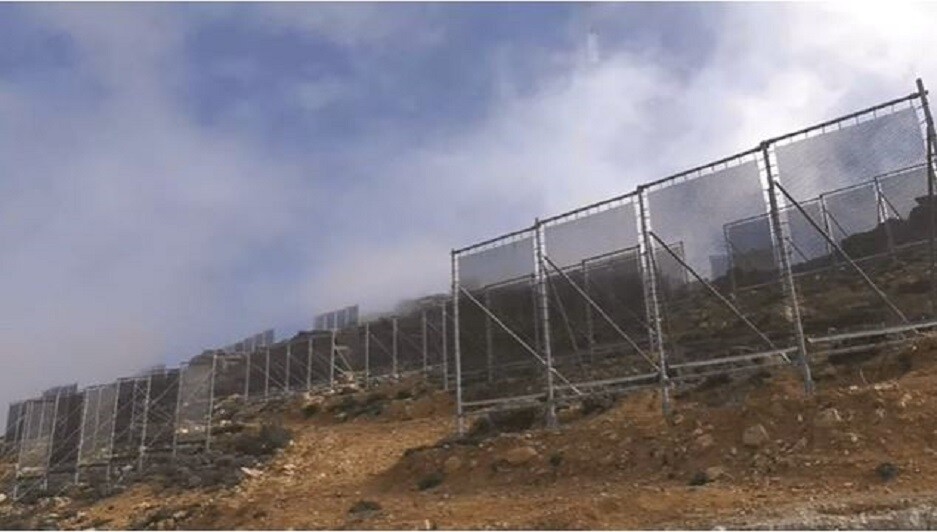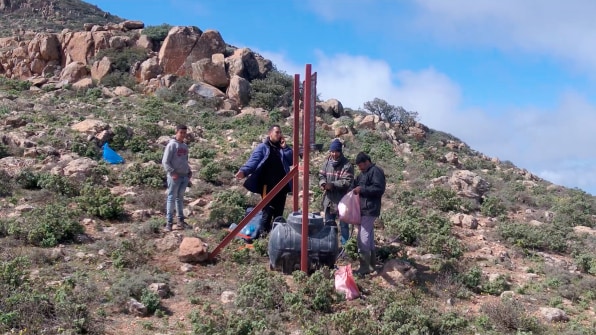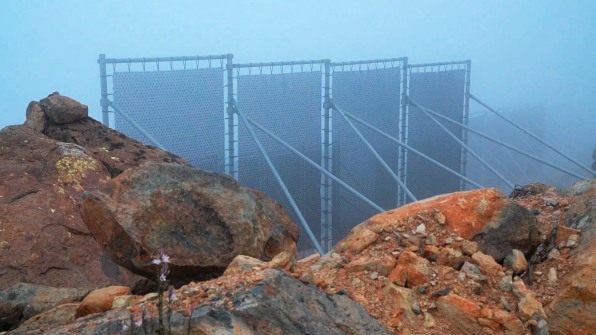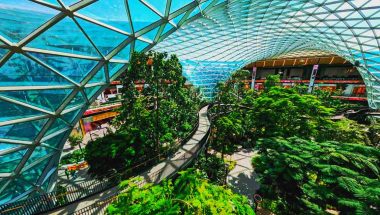- | 1:00 pm
There’s clean drinking water in fog—if you know how to harvest it
Pairing modern technology with ancient techniques, these cloudfisher nets could be a model for places with disappearing drinking water.

Pollution, contamination, and climate change are threatening our most important global resource: drinking water. Over half of the world’s population could be facing water scarcity by 2025. But in the dry, mountainous Ait Baâmrane region of southwest Morocco, an ancient practice known as fog harvesting has been given a modern update to provide fresh drinking water for thousands of people and their livestock.
“We are not the first ones. On the contrary, we have benefited from a millennia-long tradition of people harvesting fog, be it in the Kalahari Desert or in the Arabic peninsula,” says Jamila Bargach, the executive director of the Dar Si Hmad Foundation, on this week’s episode of Fast Company’s World Changing Ideas podcast. “Fog condenses on any surface into small drops of water. And those drops of water, once amassed, become a lot of water.”

The organization has installed nearly 20,000 square feet of metal nets, known as cloudfishers, along the mountainside to catch the fog water as it rolls in. The nets channel captured water into a large reservoir, which is then piped down the mountain, to be mixed with groundwater and distributed to people’s homes.

The cloudfishers have been structurally adapted for the intensive heat and high winds of the region. “It’s just a simple mesh that’s folded twice, then it’s expanded on two wooden pillars, almost like [on] a volleyball court,” says Bargach. “The fog is pushed by the wind, the active element. And then it goes through this mesh and gets caught in the mesh. . . . It’s that simple.”
The fog water now serves 16 villages, with plans to expand to 12 more low-income communities. The main benefactors, says Bargach, have been the local women, who previously walked for miles to collect water from regional wells, and now get more than three hours back in their days.
The volcanic, rocky landscape of the area makes it difficult for plants to grow, and the region gets virtually no rain. But this is now the largest-functioning fog collection project in the world. And it’s a very special type of weather formation that the local residents get to witness. “You see the fog coming, it really behaves and acts like a sea; It has waves of fog that fold in and then expand and fold in and expand,” said Bargach. “All the visual references, everything becomes blurry in the beginning, and then disappears entirely because the fog is so thick.”
As climate and ocean currents shift, there is concern that the seasonal fog—like the rain—could stop turning up or that air pollution from nearby cities could contaminate the precious resource. But Bargach says that so far the fog has remained in pristine condition. “We do lab tests cyclically on the water because it’s our responsibility and we follow what happens in the region,” she said. “We always joke about how everybody’s drinking almost like Perrier water in the region because the water is so special.”






































